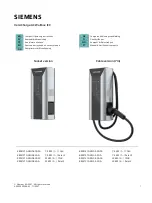
Only tighten the wheel bolts or wheel nuts
when the vehicle is on the ground.
!
When changing a wheel, use only wheel
bolts that have been approved for the
wheel rim and vehicle.
Always pay attention to the instructions and
safety notices in "Changing a wheel"
Fit tyres with a specified direction of rota-
tion only according to their direction of rota-
tion. An arrow on the sidewall of the tyre
indicates its correct direction of rotation.
X
Clean the wheel and wheel hub contact
surfaces.
X
Push the wheel onto the wheel hub and
press it on.
X
Screw in the wheel bolts and tighten them
slightly.
X
Lower the vehicle all the way.
X
Remove the jack.
X
Tighten the wheel bolts evenly in a cross-
wise pattern in sequence indicated
:
to
?
. The tightening torque must be
105 Nm.
X
Check the recommended tyre pressure and
adjust if necessary.
i
Vehicles with tyre pressure control sys-
tem: all fitted wheels must be equipped
with functioning sensors.
Vehicles with steel wheels and hub caps:
X
Fit hub cap
A
such that valve
B
does not
become trapped.
X
Press the hub cap evenly onto the wheel
with both hands until you hear the hub cap
engage.
X
Check to make sure the hub cap is seated
securely on the wheel.
Vehicle with steel wheels and wheel hub cov-
ers:
X
Fit the hub cap cover.
Storing wheels
X
Store wheels in a cool, dry and dark place
when not in use.
X
Protect against oil, grease and fuel.
Using the tyre pressure monitor
Useful information
It is the driver's responsibility to set the tyre
pressure to the recommended cold tyre pres-
sure suitable for the operating situation.
The tyre pressure monitor issues a warning
when the pressure drops in one or more of the
tyres.
The tyre pressure monitor works properly
only if sensors are present in all four tyres,
154
Using the tyre pressure monitor
>> Maintenance and care
.
















































